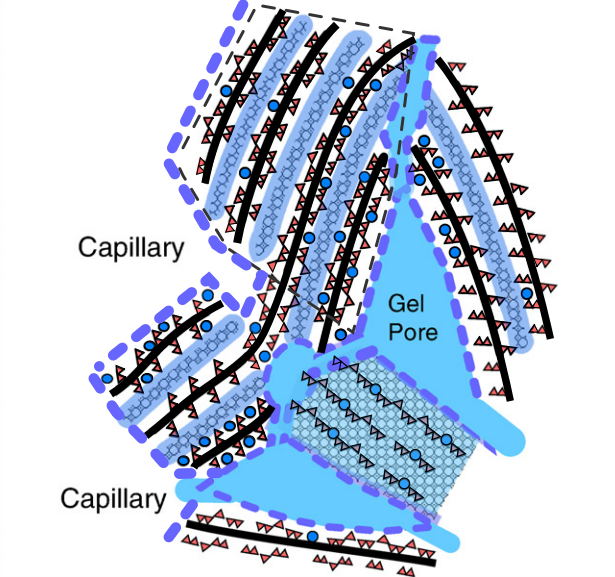Citation
Jennings, H.M.; Kumar, A.; Sant. G. Cement and Concrete Research 2015, 76, 27-36.
Jennings, H.M.; Kumar, A.; Sant. G. Cement and Concrete Research 2015, 76, 27-36.
A new ability to quantitatively evaluate the complex pore system of cement pastes, using water sorption isotherms, is used to illuminate: (a) evolutions of microstructure during drying, (b) the mechanisms that control drying shrinkage, and (c) a novel method to compute the original w/c (i.e., water-to-cement ratio, mass basis). Each of these points has significant implications on concrete performance and durability in engineering practice. We show that irreversible changes in the nanostructure during first drying are associated with changes in the pores that empty between ≈ 85-and-45% relative humidity (RH). It is also shown that water in the interlayer space (e.g., similar to clays) of the binding calcium–silicate–hydrate (C–S–H) phase, does not empty until drying below ≈ 25% RH. However, this water, once removed, does not completely re-saturate the pore spaces even at nearly 100% RH — for time scales on the order of weeks. With the ability to specifically identify the volume of pores associated with the C–S–H gel, as opposed to the larger capillary pores and the smaller interlayer spaces, a method for computing the original w/c (and hence cement content), of cementitious material is proposed. These results suggest improved methods for evaluating and modeling the engineering behavior of cement-based materials.
